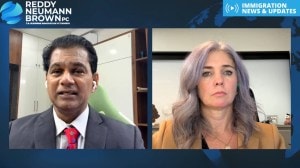By Pankaj Vashistha
Across the globe, various sectors are acknowledging the vital importance of digital transformation and the insurance industry is no different. Embracing digital tools and insights driven by data empowers insurance companies to streamline their operations, enhance customer engagements and offer tailored products and services. Key technological advancements in this regard include artificial intelligence and predictive analytics. Serving as powerful digital assets, these tools sift through extensive data sets to forecast risks, anticipate customer behavior and predict claims. By harnessing historical data, market dynamics and other pertinent factors, insurers become equipped to make more informed decisions regarding premium rates and coverage extents.
For years, the insurance sector heavily depended on conventional techniques to assess risks. These methods encompass actuarial computations, examining historical data and manually conducting underwriting procedures. Although effective to a certain extent, these methodologies struggled to keep pace with swiftly evolving market conditions. This is where the emergence of AI-driven predictive analytics proved to be a game changer. By harnessing machine learning algorithms, it facilitates the analysis of extensive data sets, enabling the anticipation of future occurrences or behaviors. Consequently, this leads to improved risk evaluation and more accurate premium calculations.
Role of AI-enabled predictive analytics: Transforming practices within the insurance sector
Automating risk evaluation and underwriting: Underwriting involves sifting through large databases, many of which include unstructured documents, in order to assess the risk attached to prospective policyholders. Data entry, validation and manual document retrieval are all part of this process. Automating these tasks, AI-enabled predictive analytics comes into the picture, significantly reducing processing costs and human errors. This technology adeptly extracts pertinent data from documents, allowing underwriters to allocate their attention to high-value tasks. Moreover, predictive models enable insurers to do a more thorough evaluation of risk levels by analyzing large datasets that cover a variety of parameters, including policyholder characteristics, credit ratings, claims history and external data sources.
Refining pricing strategies: Insurance companies can create complex pricing models with predictive analytics that take into account a variety of parameters, including policy coverage, past claims history, client demographics and external variables like weather patterns and economic indicators. Through a comprehensive grasp of the price elasticity of demand, insurers can enhance their pricing tactics and provide more individualized and competitive rates. This not only benefits insurers but also enhances the customer experience. Drawing insights from historical data, AI-driven predictive analytics offers policies precisely tailored to customer requirements, ensuring both customer satisfaction and regulatory compliance. This results in customers receiving customized policies at competitive rates, thereby elevating their overall experience.
Enhanced identification of fraud: Insurance companies face a considerable challenge in combating fraud, which often leads to significant financial repercussions. AI-driven predictive analytics presents a robust solution for identifying and averting fraudulent actions more effectively. Insurers can quickly identify suspicious activity and look into possible fraud cases by examining trends and abnormalities in claims data. This not only aids in minimizing financial losses but also protects the integrity of the insurance framework, ultimately resulting in greater pricing stability for policyholders.
Revolutionizing insurance industry
Predictive analytics powered by AI is transforming the insurance sector by providing insurers with insightful information to improve underwriting procedures and pricing tactics. Through the utilization of sophisticated algorithms and extensive data sets, insurers can more precisely evaluate risks, tailor premiums, and optimize operational efficiency. This transition towards personalized risk assessment, heightened underwriting precision and expedited claims management yields advantages for both insurers and policyholders. Adopting AI-driven predictive analytics will be crucial for insurance businesses to stay competitive and satisfy the changing demands of the modern market as technology advances.
The author is CEO and co-founder, Policy Ensure









